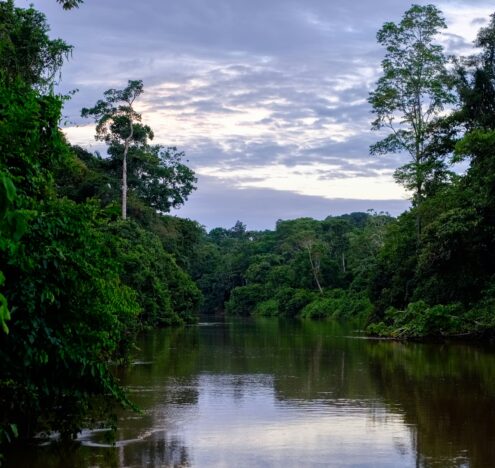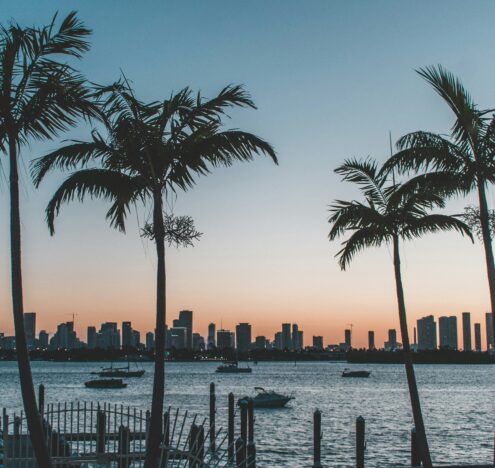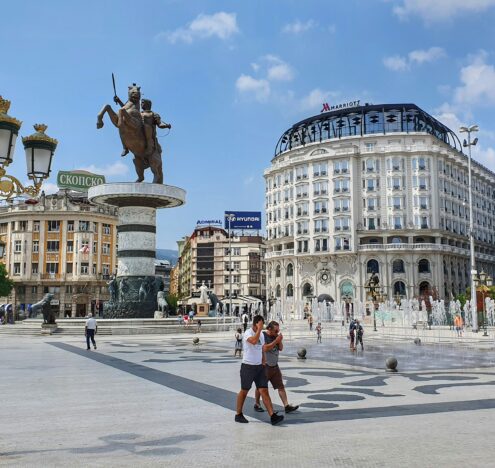This analysis was featured in Critical State, a weekly newsletter from Inkstick Media and The World. Subscribe here.
When the Journal of Peace Research dedicates a whole special issue to the security implications of climate change, Critical State is required to cover it. Those are just the rules. This week and next, we’ll dig into articles from the special issue that increase our understanding of how a warming climate will change patterns of political violence.
A commonly understood consequence of climate change is mass migration. Changes in climate conditions and natural disasters force people to leave their homes, often relocating to urban areas where support networks and employment opportunities are greater. But you can’t hide from climate change by moving to a city. Weather fluctuations, food insecurity and political instability have a way of wending their ways into urban life, posing continued threats to climate refugees who are trying to build anew.
A large research team from the University of Exeter and the University of Dhaka came together to study the ways climate change endangers urban climate refugees by looking at communities of migrants in Chattogram, Bangladesh. Bangladesh has been rapidly urbanizing for years, and many of its rural areas are prone to increased flooding driven by climate change. As a result, large communities of climate refugees already live in Bangladeshi cities, including Chattogram. Its population has grown 3.6% a year for the past 20 years, but a lack of social service expansion has left many of the newcomers living in slums on the city’s periphery.
Cities that are built to exploit migrant communities can continue to do so for long periods, especially as climate threats increase and migrants’ other options disappear.
Researchers ran a survey of 447 migrants in four migrant communities, measuring responses against a Human Security Index (HSI) they developed to understand the threats urban migrants face in their daily life. The survey asked questions designed to gauge respondents’ physical and mental health, economic status, exposure to environmental shocks, and perceptions of physical security, along with demographic information and details about their migration. After the survey, researchers engaged some respondents in extended dialogues about their experiences, including the respondents taking two weeks to document their security concerns in photographs before discussing them with researchers.
The survey found that, despite the rising pace of natural disasters pushing people from rural areas into the city, mechanisms for integrating migrants into urban economic life have not kept pace. Instead of migrant communities growing in security over time as they establish themselves in the urban fabric of Chattogram, survey respondents said their new communities were subject to continued economic exploitation. Indeed, migrants who had lived in the Chattogram slums for six to 10 years scored significantly lower HSI values than migrants who arrived in the past six months, and felt more trapped in their new homes.
Part of the issue is that migrants in Chattogram are subject to many of the same environmental threats in their urban lives that they fled in rural areas in the first place. Flooding is rampant, and the resulting property damage and health risks threaten migrants no matter how long they’ve lived in Chattogram. Photos taken by respondents capture the scale of the problem, showing roads that become rivers after rain and tides from actual rivers that flood living rooms. The environmental threats mix with economic exploitation to further immiserate the migrants. One woman reported that she asked her landlord to elevate her home so that it would flood less and he told her that her options were to accept the current situation or move out. “We cannot help living here,” she said. “We do not have the ability to move.”
The example of Chattogram demonstrates the human security costs that arise from a failure to address climate-driven migration. Urbanization is often a least-worst option for people fleeing climate threats, but moving to a city neither protects people from climate threats nor means they will gain the economic resources to improve their own climate resilience. Instead, cities that are built to exploit migrant communities can continue to do so for long periods, especially as climate threats increase and migrants’ other options disappear. Political change is the only path to increasing living standards for climate refugees.




















